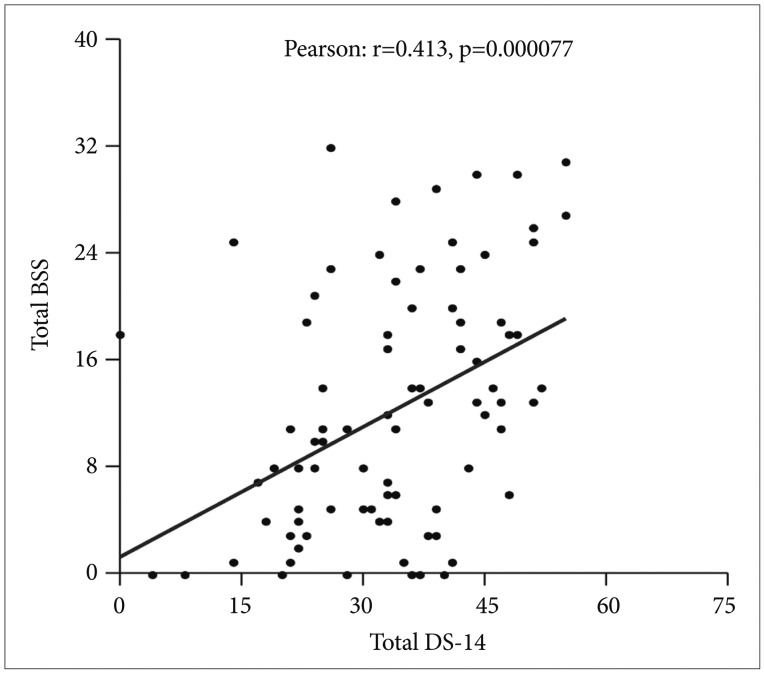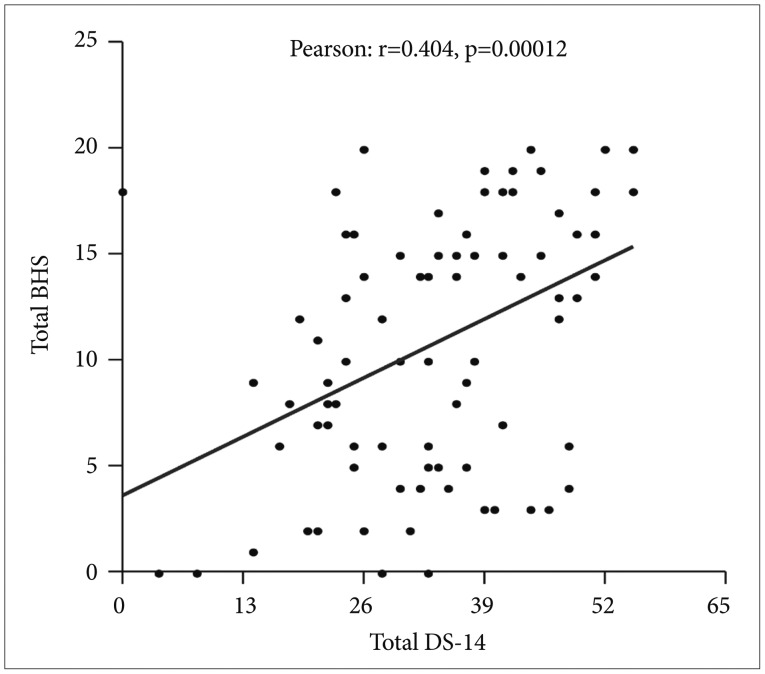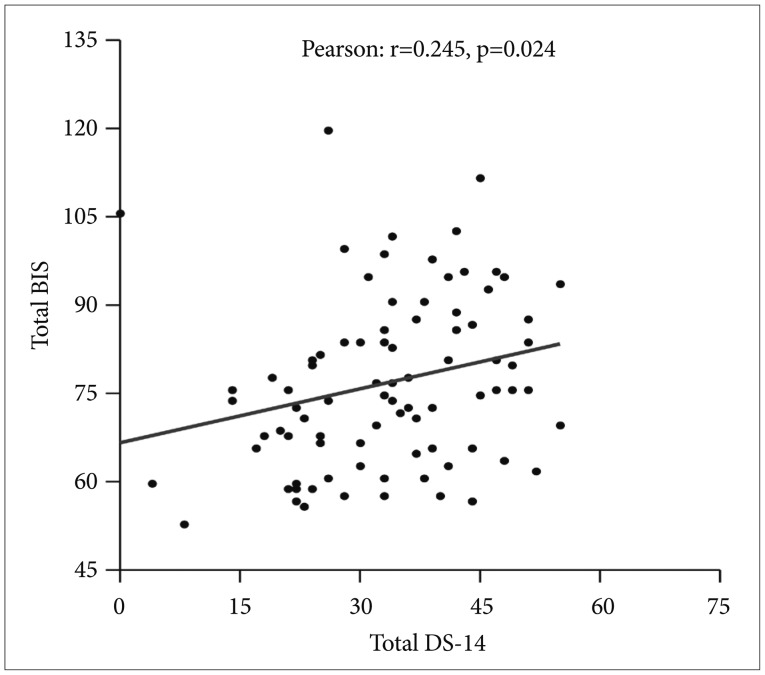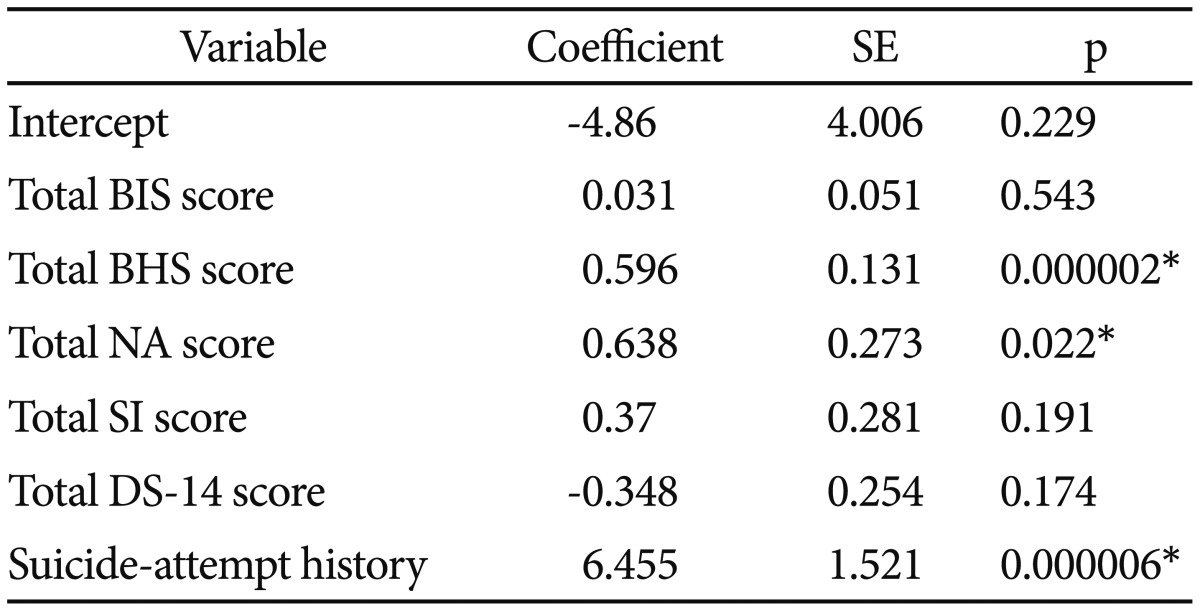1. Denollet J. Personality and coronary heart disease: the type-D scale-16 (DS16). Ann Behav Med 1998;20:209-215. PMID:
9989328.


2. Mols F, Denollet J. Type D personality among noncardiovascular patient populations: a systematic review. Gen Hosp Psychiatry 2010;32:66-72. PMID:
20114130.


3. Denollet J. DS14: standard assessment of negative affectivity, social inhibition, and Type D personality. Psychosom Med 2005;67:89-97. PMID:
15673629.


4. Denollet J, Sys SU, Brutsaert DL. Personality and mortality after myocardial infarction. Psychosom Med 1995;57:582-591. PMID:
8600485.


5. Pedersen SS, Denollet J, Ong AT, Sonnenschein K, Erdman RA, Serruys PW, et al. Adverse clinical events in patients treated with sirolimus-eluting stents: the impact of Type D personality. Eur J Cardiovasc Prev Rehabil 2007;14:135-140. PMID:
17301639.


6. Bagherian-Sararoudi R, Sanei H, Attari A, Afshar H. Type D personality is associated with hyperlipidemia in patients with myocardial infarction. J Res Med Sci 2012;17:543-547. PMID:
23626631.


7. Wu JR, Moser DK. Type D Personality Predicts Poor Medication Adherence in Patients with Heart Failure in the USA. Int J Behav Med 2013;inpress.

8. Spindler H, Kruse C, Zwisler AD, Pedersen SS. Increased anxiety and depression in Danish cardiac patients with a type D personality: cross-validation of the Type D Scale (DS14). Int J Behav Med 2009;16:98-107. PMID:
19322662.



9. Kupper N, Denollet J. Type D Personality Is Associated with Social Anxiety in the General Population. Int J Behav Med 2013;inpress.

10. Sher L. Type D personality: the heart, stress, and cortisol. QJM 2005;98:323-329. PMID:
15820973.


11. Chen J, Liu Y, Cai Q, Liu Y, Wang T, Wang J, et al. Depression in parents of children with leukemia in southern China accompanied by the prevalence of type D personality. Support Care Cancer 2014;22:1277-1286. PMID:
24326951.


12. Michal M, Wiltink J, Till Y, Wild PS, Munzel T, Blankenberg S, et al. Type-D personality and depersonalization are associated with suicidal ideation in the German general population aged 35-74: results from the Gutenberg Heart Study. J Affect Disord 2010;125:227-233. PMID:
20206385.


13. Park KB, Shin MS. Perceived stress and suicidal ideation of high school students. Korean J Clin Psychol 1991;10:298-314.
14. Shin MS, Park KB, Oh KJ, Kim JS. A study of suicidal ideation among high school students: the structural relation among depression, hopelessness, and suicidal ideation. Korean J Clin Psychol 1990;9:1-19.
15. Yi JS, Bae SO, Ahn YM, Park DB, Noh KS, Shin HK, et al. Validity and reliability of the Korean version of the Hamilton Depression Rating Scale(K-HDRS). J Korean Neuropsychiatr Assoc 2005;44:456-465.
16. Chung YO, Lee CW. A study of factor structures of the Barratt impulsiveness scale in Korean university students. Korean J Clin Psychol 1997;16:117-129.
17. Svansdottir E, van den Broek KC, Karlsson HD, Gudnason T, Denollet J. Type D personality is associated with impaired psychological status and unhealthy lifestyle in Icelandic cardiac patients: a cross-sectional study. BMC Public Health 2012;12:42PMID:
22251667.



18. Versteeg H, Spek V, Pedersen SS, Denollet J. Type D personality and health status in cardiovascular disease populations: a meta-analysis of prospective studies. Eur J Prev Cardiol 2012;19:1373-1380. PMID:
21965518.


19. Kasai Y, Suzuki E, Iwase T, Doi H, Takao S. Type D Personality Is Associated with Psychological Distress and Poor Self-Rated Health among the Elderly: A Population-Based Study in Japan. PLoS One 2013;8:e77918PMID:
24147099.



20. Gupta S, Basak P. Depression and type D personality among undergraduate medical students. Indian J Psychiatry 2013;55:287-289. PMID:
24082252.

















